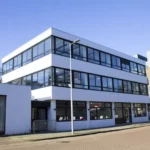
Almost 10M people die every year from cancer. It causes one in every six deaths. We’re grateful to the leaders on the forefront of research and innovation, working every day to cure cancer and save lives.
Read this to understand how the Dutch guidelines for colorectal cancer were transformed into decision trees that will enable online decision support environments to facilitate guideline application. Patient data and treatment recommendations were manually entered into a Case Report Form using Castor EDC.

The aim of this study was to convert the Dutch guideline for colorectal cancer into decision trees and subsequently implement decision trees in an online decision support environment to facilitate guideline application.
In total, 34 decision trees were developed, driven by 101
decision nodes based on the guideline recommendations.
Decision trees represented recommendations for diagnostics, staging, primary treatment, pathology, and
follow-up and included one overview decision tree for
optimal navigation. We identified several guideline information gaps and areas of inconclusive evidence. A total of 158 patients’ MTB reports were eligible for decision tree validation and resulted in treatment recommendations in 80% of cases. The concordance rate between decision tree treatment
recommendations and MTB advices was 81%. Decision trees reported in 22 out of 24 non-concordant cases (92%) that no guideline recommendation was available.
The Dutch CRC guideline was converted into decision trees and identified several information gaps and areas of the inconclusive evidence, the latter being the main cause of the observed disagreement between decision tree recommendations and MTB advices.
SUCCESS

US HQ
175 Varick St.
Ground Floor
New York, NY 10014
USA

EU HQ
George Westinghousestraat 2
1079BA, Amsterdam
The Netherlands
US HQ
175 Varick St.
Ground Floor
New York, NY 10014
USA
EU HQ
George Westinghousestraat 2
1079BA, Amsterdam
The Netherlands